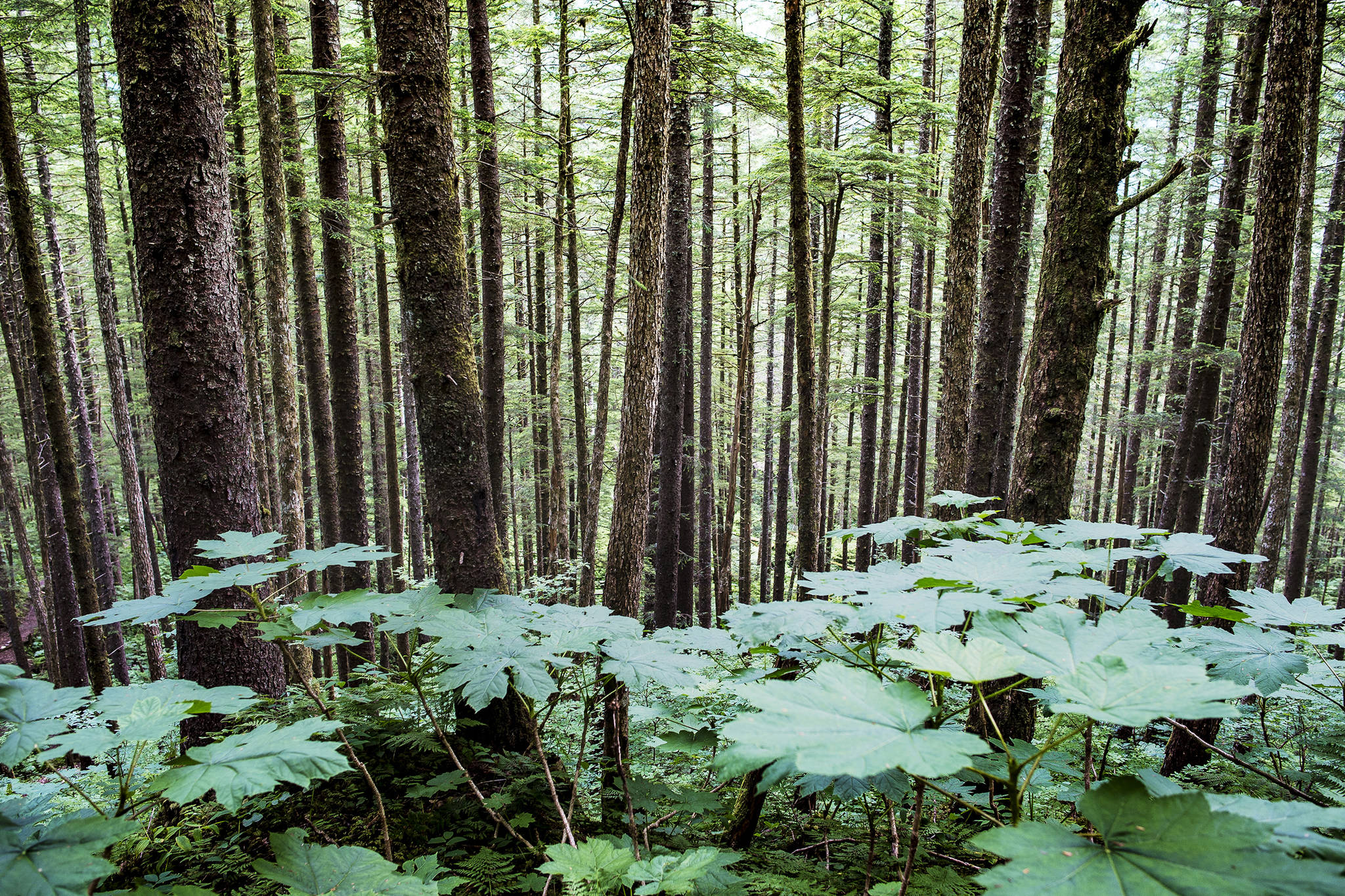Wildlife managers have set a harvest number for this year’s wolf hunt on Prince of Wales Island.
Biologists with the Alaska Department of Fish & Game and the U.S. Forest Service announced Friday that hunters will be allowed to hunt and trap 45 wolves on Prince of Wales and associated islands this fall and winter hunting season.
Wolves on Prince of Wales are known as Alexander Archipelago wolves and were once feared endangered. Numbers had dropped to just 89 animals in 2014, leading environmental groups to lobby for their protection under the Endangered Species Act. That idea was shot down in 2016 after the U.S. Fish and Wildlife Service determined the isolated population of wolves are not genetically distinct from mainland wolves.
Wolf numbers on the island have recovered since then. In 2016, wildlife managers estimated that 231 wolves lived on the island. The most current population estimate puts that number at 225 wolves, managers say.
Numbers are up so high that subsistence hunters on the island worry that wolves are killing too many deer. As much as 20 percent of those wolves are up for harvest, and local hunters lobbied last year to increase that number to 30 percent of the population. A federal game board turned that idea down in May.
Wolf populations on Prince of Wales and associated islands, known as Game Management Unit 2, are hard to pin down, managers say. Prince of Wales is the fourth-largest island in the U.S. Much of it is covered by dense forest, making aerial surveys impractical.
Managers instead started use fur samples caught with barbed wire snares to analyze wolf DNA, analyzing the samples with statistical models to estimate populations, according to ADF&G.
This year’s quota was based on data collected through December of 2017. Results of the last two years of population studies suggested that rapid population growth on the island has stabilized, managers say.
Credible reports of unreported human-caused wolf deaths will also be counted toward this year’s harvest quota.
The Alaska Board of Game meets in Petersburg in January, 2019, affording an opportunity for hunters to again change how GMU 2 wolves are managed. Fish and Game has submitted a proposal to eliminate percentage-based management, opting instead to manage wolves on the island based on a population size, where more wolves would be harvested if the population rises above a set number.
The Craig Fish and Game Advisory Committee has also proposed extending the Unit 2 trapping season.
Wolf hunting season for federally-qualified subsistence hunters on federal lands opened Sept. 1 in Unit 2, and trapping for those hunters will open Nov. 15.
State wolf hunting and trapping seasons in Unit 2 open on Dec. 1.
• Contact reporter Kevin Gullufsen at 523-2228 and kgullufsen@juneauempire.com. Follow him on Twitter at @KevinGullufsen.

